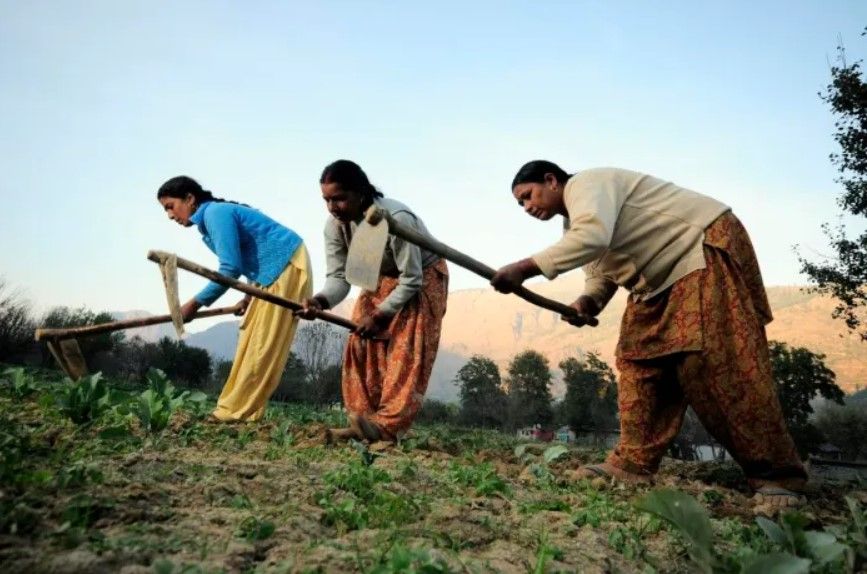According to a report, about 18% of farmer families in India are headed by women. The Ministry of Agriculture and Farmers Welfare has recognized the multifaceted role of women at every level in agriculture from sowing to planting, drainage, irrigation, fertilizing, plant protection, harvesting, weeding in crop cultivation, animal husbandry, dairy, and fisheries. Discussion is proposed to discuss the challenges faced by women farmers. It aims to work in one direction using better credit access, skill development, and other opportunities.
Crop farming, livestock management, or the work done by women farmers at home often go unnoticed. Rural women work in agricultural activities in different ways depending on their socio-economic status, such as labor on their land as agricultural laborers or farmers or participation in post-harvest tasks. The efforts made by the government to train them in poultry, beekeeping, and rural handicrafts are meager considering their large numbers. To sustain and uplift women’s interest in farming, there should be a suitable policy and achievable vision. Although now “feminization of agriculture” is happening at a rapid pace, the government has also geared up to address the challenges faced by women farmers and laborers. The biggest challenge is the powerlessness of women to claim ownership of the land they are cultivating.
About 86% of women farmers in the country do not have property rights on the land due to the patriarchal system established in the society. Notably, the lack of land ownership does not allow women farmers to approach banks for institutional credit as banks generally treat land as property. Women farmers have hardly any representation in society and are nowhere to be seen in farmer organizations or occasionally in protest. They are invisible workers (except in the recent peasant movement) without whom it is difficult to develop the agricultural economy. Women cultivators and laborers usually perform labor-intensive jobs (weeding, mowing, weeding, picking, collecting cotton sticks, tending livestock). Apart from working on the farm, they also have domestic and family responsibilities.
Despite longer working hours than male farmers, women farmers can neither make any claim on production nor demand higher wage rates. The increased workload coupled with low compensation is a major factor responsible for their marginalization. It is important to have gender-friendly equipment and machinery for various agricultural operations. It is difficult for women to operate most of the agricultural machinery. For a better solution to all this, women’s useful agricultural implements should be encouraged. Agricultural machinery banks and custom hiring centers promoted by several state governments can be linked to providing services at subsidized rentals to women farmers. Women generally have less access to resources and modern seeds, fertilizers, pesticides to make farming more productive.
The Food and Agriculture Organization states that equal access to productive resources for female and male farmers could increase agricultural production by 2.5% to 4% in developing countries. Krishi Vigyan Kendras in every district may be assigned an additional task of educating and training women farmers about innovative technology along with extension services. As more and more women are getting involved in farming, the most important task for their sustenance is to give property rights in the land. Once women farmers are accepted as primary earners and owners of land assets, their activities will expand to obtain loans.
They can then decide the crops to be grown using appropriate technology and machines, and sell the produce to the village traders or wholesale markets, thus elevating their position as genuine farmers. To derive full economic benefits from employment, rural women should be provided with more choice over their occupations so that they are not forced to take up the work left behind by men. The provision of special loans for women should be encouraged under the microfinance initiative of the National Bank for Agriculture and Rural Development. Women should be encouraged to make tools and machinery suited to their needs. Krishi Vigyan Kendras in every district can have extension services as well as programs to educate and train women farmers about innovative technology.










